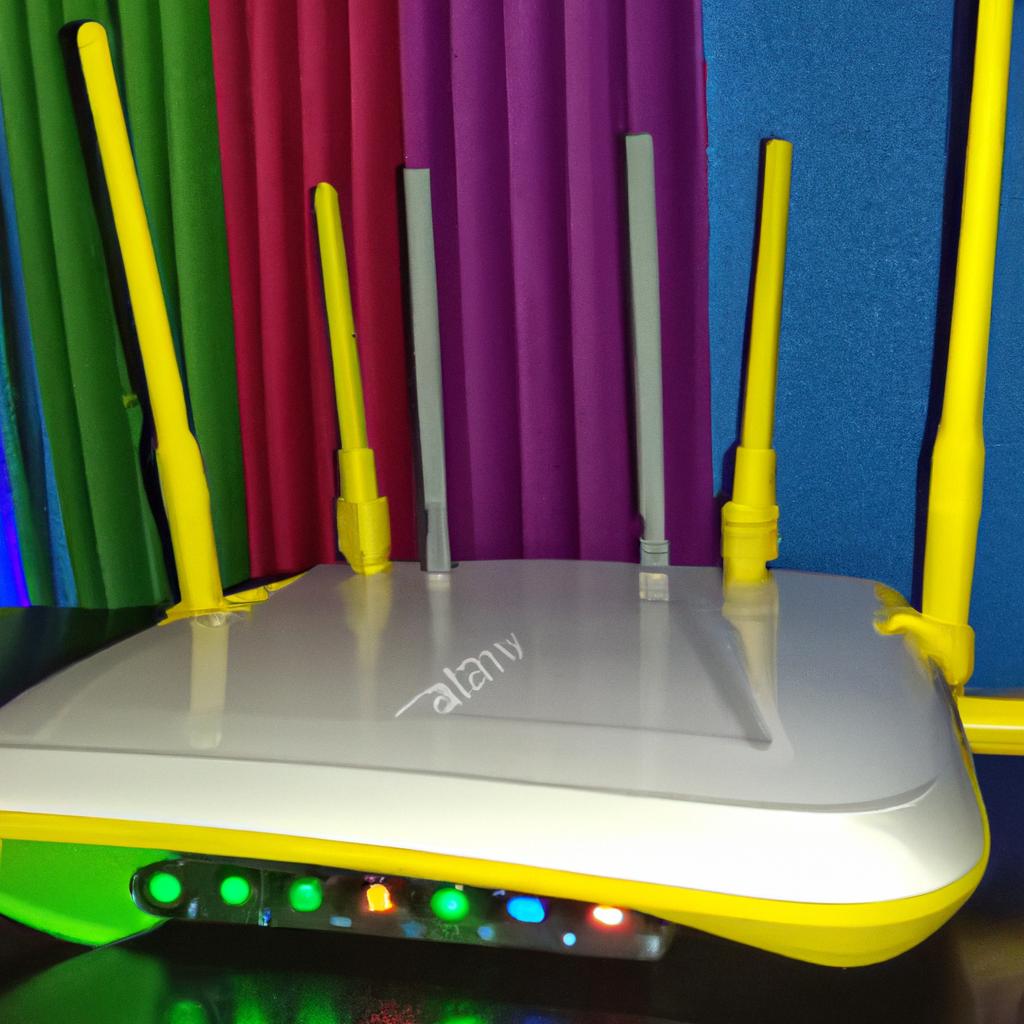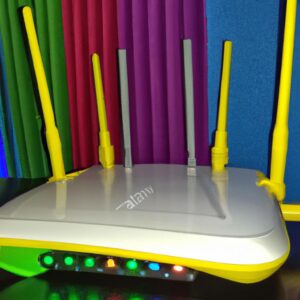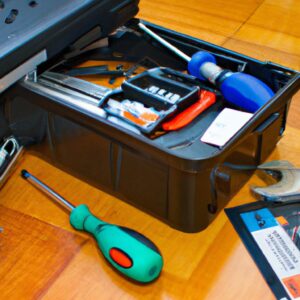Speed Up Your Wi-Fi: How to Optimize for Maximum Speed

Optimizing Your Wi-Fi for Faster Internet Speeds
In today’s digital world, having fast and reliable internet is essential. Whether you are working from home, streaming movies, or playing video games, the quality of your internet connection can have a huge impact on your overall experience. While your internet service provider (ISP) plays a major role in the speed of your connection, there are several things you can do yourself to optimize your home Wi-Fi and get the most out of your internet plan.
This guide will cover everything you need to know about optimizing your Wi-Fi connection at home for faster internet speeds, including:
- What affects Wi-Fi speed
- Finding the optimal frequency
- Analyzing network activity
- Making adjustments to your router
- Positioning your router properly
- Choosing the right access point
- Upgrading your router and hardware
- Monitoring connections and devices
- Enhancing security
- Controlling bandwidth usage
By the end of this guide, you should have a better understanding of how to optimize your home Wi-Fi connection and get the most out of your internet plan.
What Affects Wi-Fi Speed?
Wi-Fi speed is influenced by a variety of factors. These include the router, your broadband connection, your hardware, and signal strength.
The router is an important component in the internet speed equation. Routers broadcast in two different frequencies: 2.4 GHz and 5 GHz. Most routers are capable of broadcasting in both frequencies simultaneously. This means you can enjoy both fast speeds and stable connections.
Your broadband connection is also essential to your internet speeds. The faster your connection, the faster your speeds will be. It’s important to make sure your internet service provider is offering the speeds they promise, otherwise, even an optimized Wi-Fi network won’t be able to reach its full potential.
Your hardware also has an impact on your Wi-Fi speeds. If you are using old hardware, or if your antenna isn’t up to par, you will experience slower speeds. Upgrading your router or antenna can easily improve your internet speeds.
Finally, signal strength is a major factor when it comes to Wi-Fi speeds. The higher the signal strength, the faster the speeds, so it’s important to position your router properly and choose the right access point.
Finding Your Optimal Frequency
Wireless networks use two frequencies, 2.4 GHz and 5 GHz, to transfer data. The 2.4 GHz frequency offers a longer reach and is better suited for more distant connections, while 5 GHz offers faster speeds but less range. It’s important to understand the advantages and disadvantages of each, in order to select the optimal frequency for your home Wi-Fi.
Newer models of routers are able to broadcast both frequencies simultaneously, so you can benefit from the range of the 2.4 GHz frequency, as well as the speed of the 5 GHz frequency. By optimizing your Wi-Fi for the right frequency, you can ensure that everyone in your home is experiencing the fastest internet speeds possible.
Analyze Network Activity
You can use a few great tools to gain visibility into your network’s activity. You can gain insights about Wi-Fi usage, congestion, and reliability. Using these tools, you can determine the best router placement and make adjustments to reach an optimal internet speed.
It is also important to track the number of connected devices and monitor their network activity. This can help you identify any problems that may be causing interference with your Wi-Fi signal.
Adjusting Your Router Settings
Making adjustments to your router’s settings is the best way to optimize your Wi-Fi for faster internet speeds. You can easily adjust settings such as channel selections, signal output, and more. Here are some tips on making the most of your Wi-Fi performance:
- When it comes to channels, pick one that has the least congestion in your area. The 2.4 GHz spectrum is divided into 11 channels, so there’s always room to find an uncongested one.
- Boost your signal output when necessary. A strong signal is essential for a fast connection, so try increasing signal levels if you are experiencing any dead spots in your home.
- Adjust your router antennas. A good rule of thumb is to make sure the antennas are angled at 45-degree angles for optimal coverage.
- Disable power save mode if you aren’t using it. This setting can limit the number of devices that can be connected to your network.
- Enable Quality of Service (QoS) setting. This setting allows you to prioritize certain applications or devices so that they get more bandwidth when needed.
Position Your Router Properly
Having a proper router setup is essential to get optimal internet speed. It is important to ensure that your router is not placed too close to walls or other electronic devices. You should also avoid placing it near windows, as this can have a negative effect on the signal strength.
In addition to this, it is important to make sure that your router is kept away from large metal objects such as filing cabinets, refrigerators, and other large pieces of furniture.
The ideal location for a router is generally the center of the home, at a height of 5 feet from the ground. This helps to ensure that the signal spreads evenly throughout your home.
Choosing the Right Access Point
Having the right access point installed can make a huge difference in the speed and reliability of your Wi-Fi connection. When you select an access point, there are a few things to consider:
- How large is the area you intend to cover?
- What kind of signal strength do you need?
- Do you need built-in security options such as encryption or MAC filtering?
- What type of wireless technology are you using?
These are all important questions to ask yourself when selecting an access point for your home network. Knowing the answers to these questions will help you determine which access point is best for you.
Once you’ve decided on the type of access point you need, you’ll also need to properly set it up. This includes connecting it to your router, setting up security features, and making sure it’s positioned properly in order to maximize signal strength.
Upgrade Your Router and Hardware
Upgrading your router and/or hardware such as antennas is one of the best ways to get the most out of your Wi-Fi connection. By replacing old hardware with new, high-performance routers and antennas, you’ll be able to gain access to a faster, more reliable internet experience.
Newer routers come equipped with cutting-edge technologies that can boost your speeds and increase your overall network coverage. Additionally, antennas can be used to target specific areas of your home to provide increased signal strength for a faster connection.
By investing in new hardware, you’ll be able to ensure you’re always getting the best possible speeds from your Internet connection, and can easily stay a step ahead of the competition.
Monitor Connections and Devices
Keeping track of all the devices connected to your home Wi-Fi network is an important step towards improving your internet speeds. Not only can you identify which devices are taking up the most bandwidth, but you can also monitor their network activities and detect any interference or anomalies that can slow down your connection.
To get started, log in to your router’s settings and look for a section labeled “Attached Devices” or “Network Clients.” This will give you an overview of the different types of devices connected to your network and how much bandwidth they are using. You can also look up the device’s manufacturer so you’ll have a better understanding of what it is and if it’s taking up too much bandwidth.
Inspecting the activity of individual devices can be helpful when troubleshooting connection problems. It’s possible to view real-time and historical information about traffic and bandwidth usage, so you can quickly spot anything that isn’t working correctly. You can also set up alerts to notify you of any suspicious activity or excessive usage of your network.
Monitoring your network activity is a great way to troubleshoot and optimize your Wi-Fi connection to ensure it’s always running at full speed.
Enhance Your Security
Having a secure connection is essential for having a fast and reliable Wi-Fi. You can do this by using WPA2-AES encryption, which encrypts the data that’s sent over your home Wi-Fi. Additionally, it’s important to avoid public Wi-Fi networks since they can be less secure; these networks may also contain too much traffic and cause your internet speed to drop.
Controlling Bandwidth Usage
Bandwidth is essentially the speed at which data can be transferred over your home Wi-Fi network. It’s important to limit non-critical activities such as streaming video or playing online games, to free up bandwidth for tasks that need faster speeds, like downloading large files or backing up data. You can control bandwidth usage with a few simple techniques:
- IP or MAC address filtering: This allows you to set access permissions for specific devices and manage how much bandwidth they are able to use.
- Parental Controls: Parental controls can be used to limit the amount of time children can spend online as well as their access to certain websites.
- Network Prioritisation: Network prioritization can be used to prioritize bandwidth usage on specific tasks, so that important tasks get the most bandwidth and others get less.
By controlling your bandwidth usage, you can optimize your home Wi-Fi network for faster internet speeds.
The Benefits of Wi-Fi Optimization
Wi-Fi optimization can provide a wide range of benefits, from faster browsing speeds to improved security and enhanced network reliability. Having an optimized Wi-Fi connection at home allows you to access the internet quickly and easily, without dealing with any slowdowns or interruptions.
By optimizing your Wi-Fi connection, you can enjoy smoother online gaming, streaming, and video conferencing experiences. Aside from improving your everyday internet use, an optimized connection also provides better security, enabling you to protect your network and devices from malicious attacks.
Finally, when you optimize your Wi-Fi, you can reduce congestion on the network and improve its reliability. By implementing the tips outlined in this guide, you can ensure your connection remains stable and secure for years to come.
comments: 0






